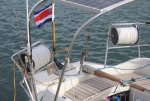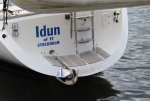rigpigpaul
Member
Hi All, I plan to anchor in small remote beaches this summer. They will be mainly small shale . I do not want to use an anchor. I want to maybe use an auger or rod hammered into the sand. Th e boat is 12m. Your advice is greatly appreciated. RPP








